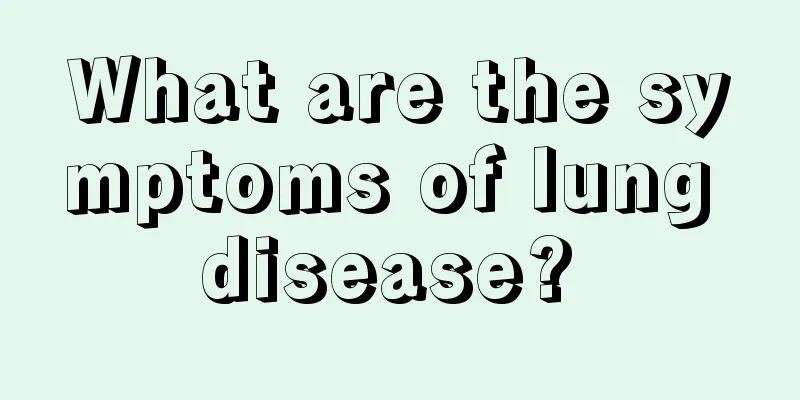What is the process of digestion and absorption of lipids?

|
Lipids include many types, such as oils and lipids. The range of lipids is very broad, mainly small organic molecules in the human body. It is a general term for lipids, oils, and fats. The physiological functions of lipids are to supply and store energy, supply essential fatty acids, form biological membranes, maintain human body temperature, etc. Lipids are very important to humans. Next, let’s take a closer look at the digestion and absorption process of lipids. Lipids include neutral fats (triglycerides), cholesterol and phospholipids. Generally, greasy foods mainly refer to the first two, especially those with high triglyceride content. Lipid is one of the indispensable nutrients for the human body. It not only provides energy to the body, but is also an indispensable raw material for the formation of cells and tissues, and can also provide fat-soluble vitamins. However, to play these important roles in the body, it must first be digested and absorbed by the intestines. The digestion and absorption of lipids mainly takes place in the small intestine. Participants in digestion and absorption include lipases in the pancreas and small intestine, and bile salts in the bile. The alkaline environment formed by the secretion of bicarbonate by the pancreas and bile is also an indispensable environmental condition. Taking neutral fat as an example, it must first be emulsified into extremely fine droplets by bile salts, lecithin, etc. in bile. The surface area of the fat is thereby expanded many times, allowing it to fully come into contact with digestive enzymes. Under the catalysis of bile salts and other substances, the activity of lipase is greatly increased, breaking down triglycerides into glycerol and fatty acids. The latter are once again combined with bile salts and cholesterol to form water-soluble micelles, which can then be absorbed into the small intestinal epithelial cells, completing the entire process of digestion and absorption. Sometimes it separates, sometimes it combines. Do you think the process of digesting fat is complicated? Bile salts from the gallbladder play an important role in fat digestion by first purifying the fat and reducing its surface tension, and then emulsifying the fat into very fine emulsified particles. Pancreatic juice contains lipase, which breaks down fat. The products of decomposition are diglycerides, monoglycerides, fatty acids and glycerol. Short-chain fatty acids with less than 12 carbon atoms are directly absorbed by the lining of the small intestinal mucosa. Long-chain fatty acids are then esterified into triglycerides, combined with cholesterol, lipoproteins, and phospholipids to form chylomicrons that enter the lymphatic system and finally enter the blood and are transported to various tissues of the body. Among all food lipids, only milk lipids are rich in short-chain fatty acids, while long-chain fatty acids must be transported through the lymphatic system. The absorption of long-chain fatty acids occurs in the small intestine by passing through the intestinal mucosa into the terminal lymphatic vessels, where they are re-lipidated with glycerol in the lymphatic vessels to undergo resynthesis of triglycerides. These chylomicrons enter the blood through the lymphatic thoracic duct and auxiliary pathways, mainly at the junction of the left jugular vein and subclavian vein. Lipids that are liquid at body temperature are well digested and absorbed, whereas many lipids whose melting points exceed body temperature are difficult to digest and absorb. Therefore, some animal fats are still solid at 37 degrees. Difficult for the body to absorb. By reading the above information, we have a general understanding of how the digestion and absorption process of lipids works. The digestibility of food fat is related to its melting point, so when eating fatty foods, we have to be concerned about whether our body can afford it. In reality, obese people generally have fatty liver, so it is recommended to avoid excessive lipid intake during diet. |
<<: What are the ways in which health massage promotes the circulation of qi and blood?
>>: What are the causes and treatments for bloating on the left side of the abdomen?
Recommend
How to clean earplugs
In daily life, earplugs are a very common daily n...
Is it good to take health supplements regularly?
Nowadays people are very concerned about health. ...
What harm does running a marathon do to the body
Marathon is an extreme sport. If your physical co...
How to prevent recurrence of gallbladder cancer
The main clinical manifestations of gallbladder c...
Does soaking your feet in mugwort help you get pregnant?
Mugwort is a common plant and also a medicinal ma...
What to do if the body is too loose
Many times people appear to have loose flesh due ...
Is it possible to cure lung cancer?
In recent years, lung cancer has become the main ...
Can MRI examine the lungs?
I believe that many people do not know what part ...
How long can you live if pancreatic cancer cells spread
The treatment of pancreatic cancer is a systemati...
How to make refreshing sweet and sour cucumber
Cucumber is a common vegetable in our life. In th...
Tonsillitis in summer
Tonsillitis is a very common phenomenon. There ar...
What is the fastest diuretic drink
What is the fastest diuretic drink? Many fruits h...
Benefits of practicing yoga
Yoga is a very common sport. This kind of exercis...
What are the common methods to prevent cervical cancer? If you want to prevent cervical cancer, you can exercise more.
How to prevent cervical cancer Eat more vegetable...
Late pain in prostate cancer bone metastasis
Pain in the late stage of prostate cancer bone me...









